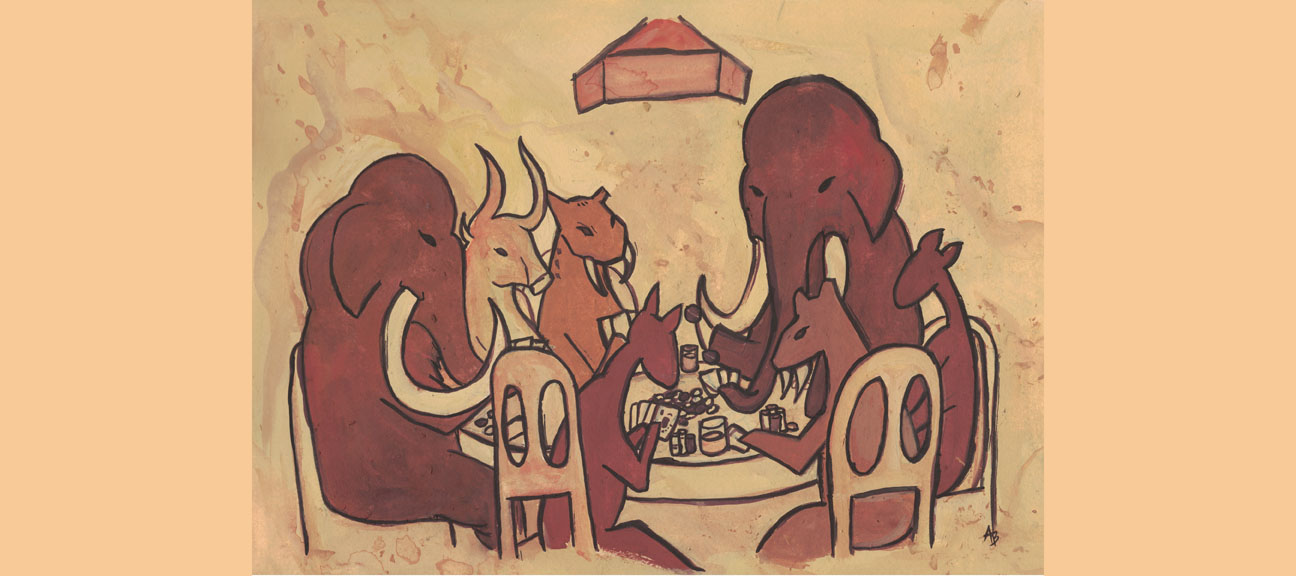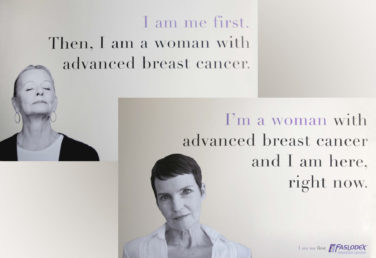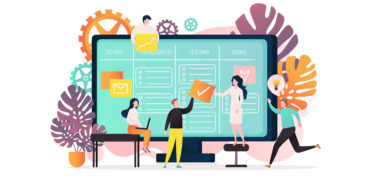Media stores our stories, inspires us to imagine, and keeps us connected.
From smearing pigments to streaming pixels, we have used new tech to make media better and reach more people. Paleolithic peeps doodled stick figures on cave walls. Gutenberg used a grape press for pages. Jobs put it all in our pockets. Since Case walled Berners-Lee’s worldwide garden, our go-to move has been to slap ads on things.
Ads paid for more media. More media supported more ads. It was an unstoppable force. This year, the COVID quagmire slowed our movement. You might say we were immovable.
This is a story of what happens when an unstoppable force meets an immoveable object.
Chapter 1: “Bombarded.”
Pharma couldn’t get their salesforce feet on Dr. Street. They compensated by buying more media. Media companies used those new dollars to put more media in market. Doctors noticed. We’ll let Dr. Mark Lewis get things started. He’s an oncologist at Intermountain in Utah.
“Bombarded.” That’s how he put it. “There was a pretty massive spike in emails.” The ad-valanche didn’t stop there. He saw a “targeted stream of pharma ads on Twitter.” Perhaps because I follow @MarkLewisMD on Twitter, ads from AstraZeneca, Bristol Myers Squibb, Celgene, and Merck showed up in my timeline.
Doctors know how to tune ads out. The next time you see a pharma ad geared to doctors in your Twitter feed, take a look at who likes and retweets them. I analyzed about a dozen ads. Most don’t engage any doctors. Even the most effective ads for HCPs engage one or two doctors.
Dr. Lewis took opting out to a new level. How? In late August, Dr. Lewis went on a five-day, “media fast.” He returned, “more selective in [his] media diet.”
Chapter 2: Food for thought.
“How do you get [more] information to [more] people?” This ask comes from Christopher P. Cannon, MD. A few weeks ago, he “attended” the European Society of Cardiology (ESC) “Digital Experience.” He is the Director of Education in Cardiovascular Innovation at Harvard’s Brigham and Women’s Hospital.
He marveled at the reach of the now open-access meeting. Then he rattled off multiple stats to back it up. “Four times as many people accessed the information at the ESC. That’s astounding. A lunch time [event] would draw about one thousand people. This year, it drew 10x more—unbelievable. I did a Facetime Live program and reached more than 2,000 cardiologists in India.”
It’s not just society meetings. “Attendance for conferences at our own hospital [The Brigham] are up as well. We would usually get 10 people at 7:15 am for a vascular section; now 150 people attend.”
His key takeaway, “Virtual events are here to stay.” Dr. Cannon echoes the words of Nike CEO, John Donahoe, “Digital is here to stay.” Why? Because digital momentum is sticky. Donahoe added that it is “fueling…the future of retail.”
Stents. Shoes. It’s all the same. Nike moved out of malls and into more, smaller stores. Similarly, Dr. Cannon sees a future with many more (smaller) events. “Have more virtual conferences—perhaps monthly—on rotating topics.” It makes topics more timely.
Chapter 3: The time is now.
Dr. Cannon underscores the need for new. “There’s a buzz around new data. People are enthusiastic for new information. During an event, there’s a bolus of news.” He continues, “I have to tune in and see what’s going on. A live conference, while it’s fresh, still matters.”
In media terms: Be timely.
Back to Dr. Lewis, “Search a term in PubMed, it gives you an ‘avalanche back.’” Those last words came from his former Chief at MD Anderson, Dr. Michael Fisch. @FischMD joined Twitter nearly 10 years ago and helped make Medical Twitter a thing. Dr. Fisch’s advice, “Sit back, listen, and pick people you respect [to follow].”
Media translation: Curate content.
For a long time, Twitter was the go-to for timely, curation. Together, Drs. Cannon, Fisch, and Lewis have been on Twitter for 28 years. They have tweeted 42k times and have more than 62k followers.
A June study in The Annals of Thoracic Surgery found that peer-reviewed stories that were tweeted were also more widely cited.
Chapter 4: Doctors hew to new.
So, Twitter is the bomb. Not so fast.
Dr. Cannon has more connections on LinkedIn (more than 6k) than followers on Twitter (5k). He has found new medical information more often on LinkedIn than on Twitter—and so looks there to not miss anything.
Why? “LinkedIn has a nice audience—it’s largely all medical folks that are there. As opposed to Twitter who are who knows who.” That’s not all, “Unless you are there all the time, you miss content.”
Medical content has a tail longer than Twitter. In a way, it’s a Goldilocks problem. PubMed has too long a tail; Twitter’s tail is too short. Doctors need something that’s just right.
Few platforms for doctors blend modern media features with medical reality. If you’re looking for a blueprint, start with these must-haves:
- Connect with more people—ideally, colleagues.
- Rely less on ads to support access.
- Surface new, fresh, timely, relevant content.
- Keep the best content at hand.
That’s the great thing about media—the people who use it force it to evolve.
Chapter 5: Where do brands look for new?
Media is evolving. “COVID-19 has created an unlikely scenario where five years of innovation has occurred in the space of just seven months.” That amazing quote comes from Colan McGeehan. Colan is the Chief Investment Officer for Publicis Health Media (PHM).
As I typed that, a friend and SVP at another large media agency emailed me this: “Most of the typical and non-performing (????) stuff is taken. Any ideas where we can find inventory in something new?”
New. There’s that word again. McGeehan offered a few examples: “We like ‘pharma firsts.’ We’ve featured physicians in a live Twitter Chat. When it comes to DTC [direct to consumer], PHM has tapped social media influencers to create fun and effective campaigns on platforms such as TikTok—also a first for Pharma.”
From one investment professional to another, we looked at what new media is attracting venture capital.
Before all of us knew we wanted to have a network of online friends, venture capital firm Andreessen Horowitz (a16z) invested in Facebook. Before people paid to crash on strangers’ couches, a16z backed AirBnB. Before our kids knew about gaming platforms, they funded Roblox.
What’s new at a16z? WhatIfI. It’s a story-hacking platform. It lets users choose their own adventure. At various steps, it presents two choices. You pick a path. It’s a brilliant way to let users control content and direct their own journey.
When are we going to see HCP versions of Twitter, TikTok, and WhatIfI?
Chapter 6: A “bettor” way to pay for media.
When the check comes, we all have alligator arms. Still, someone has to pay for all this reach and openness.
Matt Lewis has a crazy idea. Ladies and gentlemen, place your bets. Matt is the Global Chief Data and Analytics Officer at MEDiSTRAVA. And, chronically serious.
Have you ever played poker in a casino? Whether you’re up or down, the house takes a cut—on every hand. Just a little something for providing the service.
Let’s pretend the house is the American College of Cardiology (ACC). The data presented at their meetings and in their journals helps identify winning science. They deserve a cut, right?
What could this look like? Commodity futures have been around since the late 1800s. A farmer who grew grain didn’t want to take price risk. So, the farmer bet that prices wouldn’t go down. The bread maker wagered that grain prices wouldn’t go up. Together, they locked in a future price. Entire exchanges exist to commoditize and facilitate these trades. And, yes, they take a cut. Matt added AI here, but he had lost me at commodity.
Companies and investors could hedge science the same way. With societies as the exchanges.
Too radical? How about this? Data.
Dr. Lewis called ASCO, “Disneyworld for oncologists.” ASCO is the American Society of Clinical Oncology. If ASCO is an amusement park, ESMO is Netflix. ESMO—the European Society of Medical Oncology—ran a virtual meeting at the end of September. They shared how their community consumed their media.
 What is ESMO’s data worth? Now, consider what it might be worth if you’re involved with the IMpassion131 trial at Genentech or if you’re at Immunomedics and want to know how ASCENT is doing.
What is ESMO’s data worth? Now, consider what it might be worth if you’re involved with the IMpassion131 trial at Genentech or if you’re at Immunomedics and want to know how ASCENT is doing.
ESMO turned its data into currency. A sort of media alchemy.
In the last 20 years, media and data have converged. Data breadcrumbs curate today’s media. How we use media becomes data. If you don’t believe me, Google, “MLB scores.” You get a scoreboard, not links to publishers that produce scoreboards.
Data has always been the other side of the media coin. How many people saw our stories? What did they imagine? Who are our connections?
Maybe it’s time to splash some new art on our cave walls. The story of how we evolved media and found new ways to pay for it. I’m thinking paleolithic animals playing poker.









